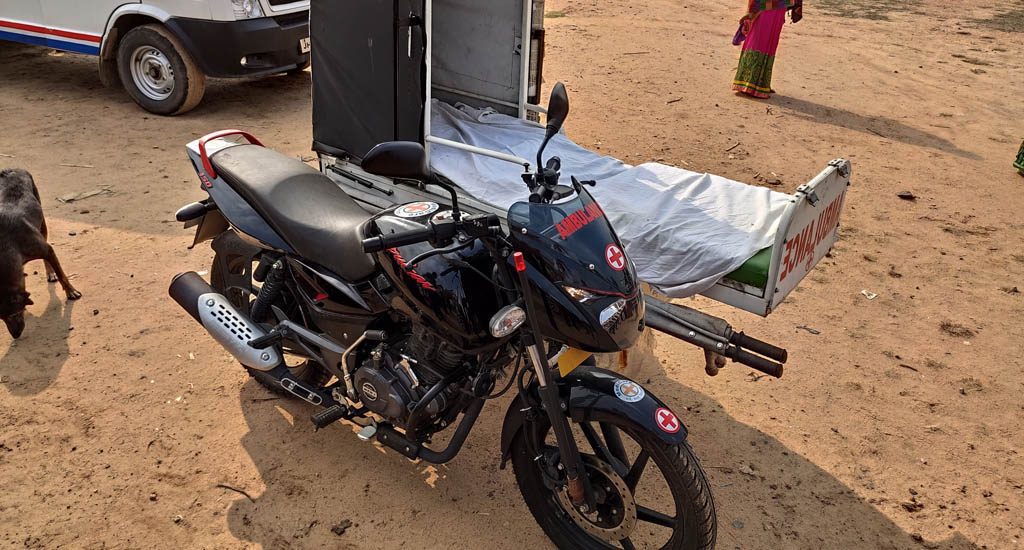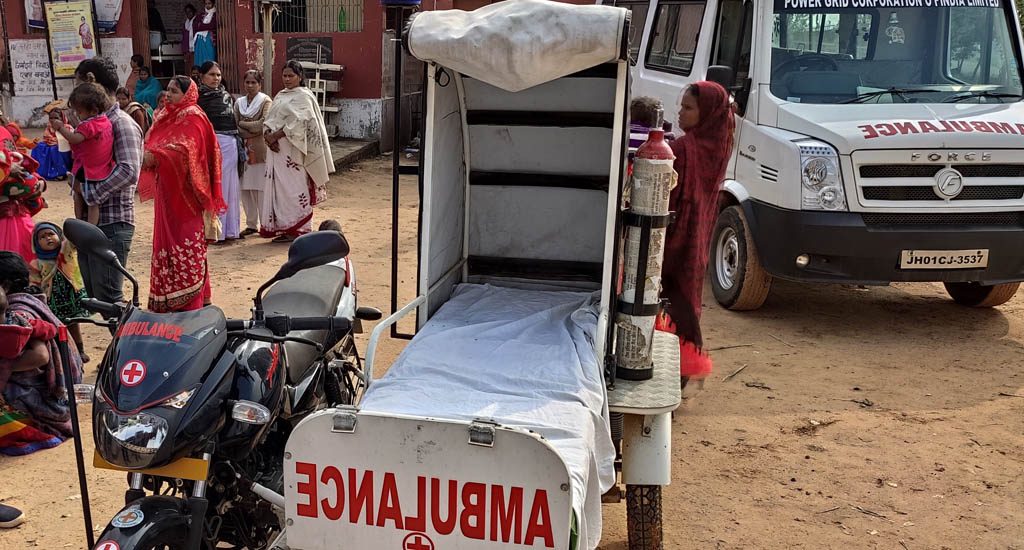Jharkhand is a young and relatively poor state grappling with troubling health indicators. For example, Maternal Mortality Rate (MMR) of Jharkhand was 165 against the national average of 130, as per the Sample Registration System (SRS) – 2018 report.
There is also the concern of a shortage of public health infrastructure and human resource, more so in rural spaces. There are 330 primary health centers (PHCs) in the state, against the requirement of 1,684; and just three medical colleges represent the apex specialty institutes.
As per national records, in 2019, 331 posts of doctors were vacant at PHC level, against the sanctioned number of 667. At community health centers, 634 posts were vacant against sanctioned 700 specialist doctors.
The population is widely spread and separated by forest areas. Some villages are remote, affecting the reach of development activities, including health interventions. Some of the areas have been affected by left wing extremism.
While dealing with various problems, the state and district administrations try cost-effective innovations. Access to emergency medical care in Chatra district using bike ambulances is one initiative where young officers are trying to bring about change.
Inaccessible hospitals
According to the recent state report, in Chatra, rural poverty is high and there are concerns related to food security. Every effort to save lives and improve the health system is worth in such a scenario. A lot can be done to improve physical access to health, especially in an emergency.
There are a total of six block-level PHCs and six additional PHCs. They are serving at least double the population than what is recommended. The distance between the PHCs and the district hospital (DH) varies from 12 to 85 km, with an average distance of 40 km. While PHCs cater to villagers’ primary health ailments, DH is their only hope for complicated health problems or emergencies.
Inadequate ambulance services
Not all deaths are emergency events, but a significant number of them are, and hence facilities like effective ambulance services are crucial. Ambulances do not represent just a transportation facility for patients but are lifesaving units.

An ideal ambulance should have lifesaving drugs, instruments and personnel who know how to handle the instruments in order to save lives or make a patient stable and comfortable till they reach a place with better medical facilities.
So, four entities are vital in order to save lives; a vehicle mounted with specific drugs and instruments, a person well trained in emergency medicine, a specialty hospital to treat the patient and a communication system between all these players, namely, patient, driver, medical personnel and the hospital.
The real-time multi-dimensional communication system is the most crucial component. It will guide the ambulance where to go and where to bring the patient and also inform the doctors at the hospital about the status of the patient, the initial intervention and further needs.
Long response time
One of the parameters to measure the efficiency of an ambulance system is the response time. The average response time of 108 ambulance, run under the National Health Mission (NHM) across the country, is reported to be 20 to 25 minutes.
In reality, the response time in India varies widely and there is no official record of the same. The longer the response time, the higher the mortality, and inefficiency of the system. Even a small improvement in any of the above parameters will reduce the response time and save more lives.
There is always a high need for ambulance services. People know that they have a better chance if they go on their own to a specialty hospital, without waiting for a public ambulance, more so in rural areas. The response time may be too long to wait. At times the service is not available or is beyond communication reach.
Emergency transportation
Currently, in Chatra district, central government has provided 10 ambulances under NHM, popularly known as 108 ambulance. The state government has provided six ambulances – one for each of the six health blocks, different from administrative blocks which are 12 in number. Two ambulances have been newly purchased from District Mineral Fund Trust (DMFT) for places of high need.

Exclusively for maternal and child health care, there are 110 contractual vehicles for transportation and allied activities. Called mamata vahan, these are not ambulances. However, the number of ambulances is far less to deal with the massive demand of the patients.
Bike ambulances
In order to deal with this gap, the district administration came up with the idea of motorcycle or bike ambulances. There are 12 bike ambulances operational under this pilot program. The bike ambulance is an idea first introduced in World War-I by British war engineers.
In India, there are a couple of bike ambulance programs in operation in various places. Karimul Haque received Padmashree award in 2017, for helping thousands of patients in Jalpaiguri district of West Bengal, by taking them to hospital in his motorcycle.
At present, two ambulances work in the serving area of one PHC each in Chatra. An advantage of a bike ambulance is that it can reach non-motorable interior areas. The district has 60% area under forest cover and many villages are not connected to arterial roads.
The bike has a stretcher, medical kit, oxygen cylinder, saline-bottle holder, siren, reflectors, etc. The local health workers and panchayat have the drivers’ numbers. When in need, they contact the driver, who reports to the medical officer. The drivers are local youth trained in first aid.
Positive initiative
In the absence of pre-existing guidelines, the initiative in Chatra included dealing with complicated bureaucratic procedures to mobilize funds. Earlier efforts in other parts of India were by the local administration, working with the limitations of inadequate resources and freedom.
The initial bulk purchase was through Member of Parliament Local Area Development Scheme (MPLADS) fund. At present, the initiative is maintained on the funds mobilized from Rogi Kalyan Samiti or Patient Welfare Committee program and some interest of DMFT funds.
The team is continuously collecting data and experiences to enhance the efficacy. Bike ambulances cost around Rs 2.4 lakh as against Rs 13 lakh for four-wheeler ambulances with basic life support and Rs 25 lakh for ambulances with advanced life support.
There are a few parameters where the two cannot be compared. Nevertheless, when there is a dearth of funds and there is a need to serve interior areas, bike ambulances appear promising. There are instances of the two models working in a complementary manner as well. Within a few months of introduction, the bike ambulancess have helped more than a thousand patients even at the pilot program phase.
Such pilot programs raised in response to the crucial needs of the community have great potential. If this succeeds, it can be expanded and replicated to similar geographies. Even if they fail, it adds to the knowledge. However, any initiative is worth the effort in this neglected aspect of public health.
Abhijeet Jadhav works with VikasAnvesh Foundation, Pune. Earlier he was a faculty at Tata Institute of Social Sciences, Mumbai. Views are personal.


